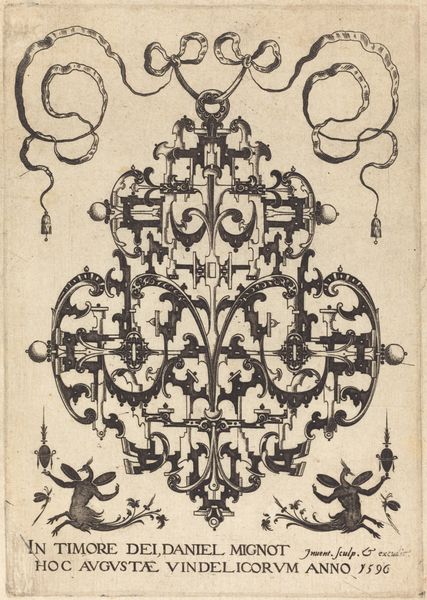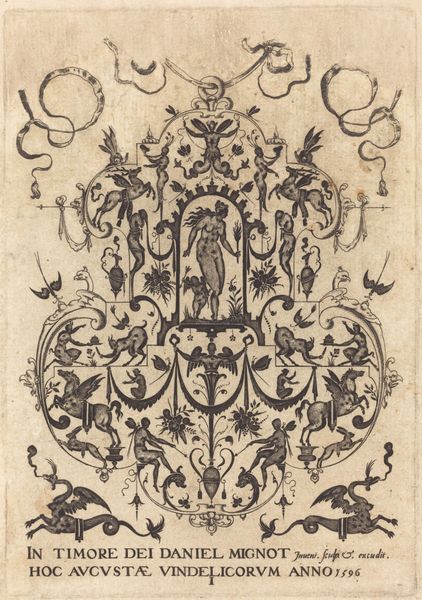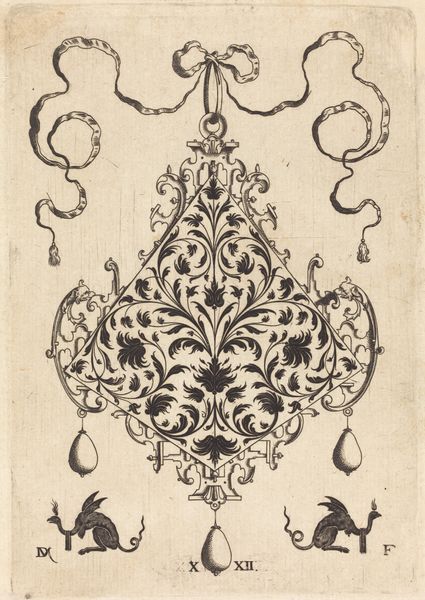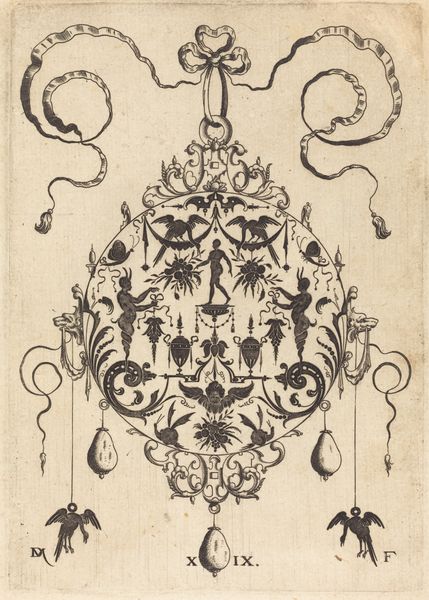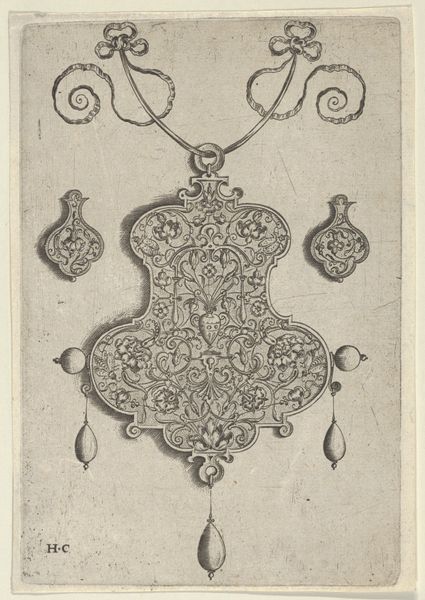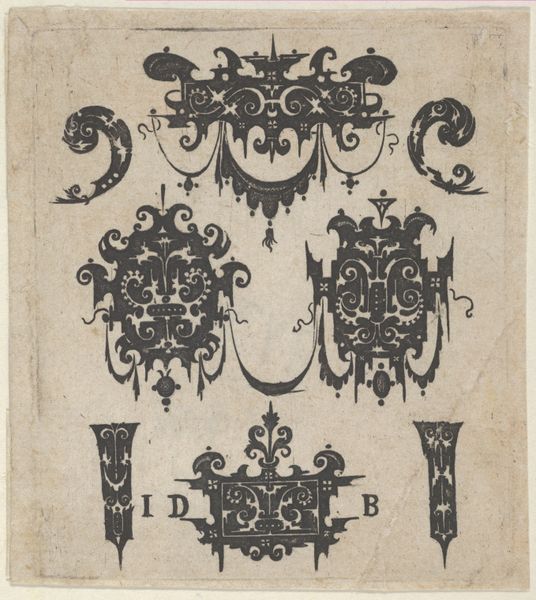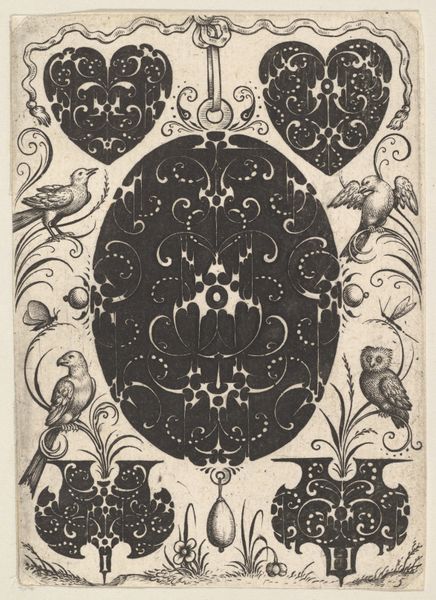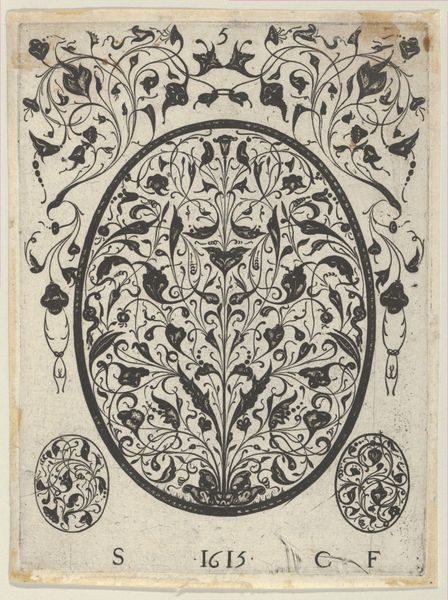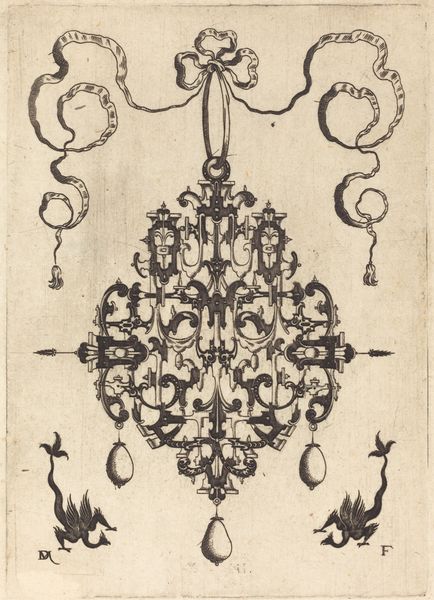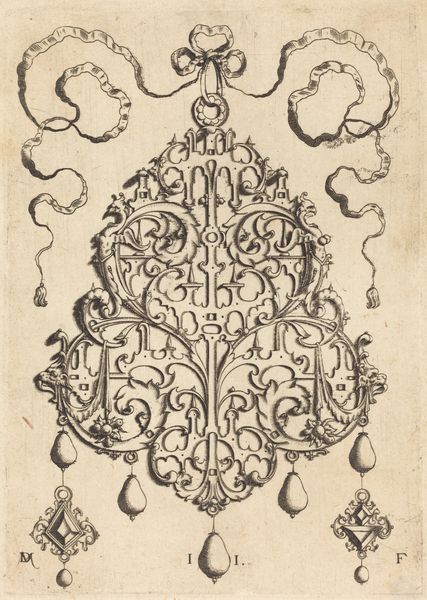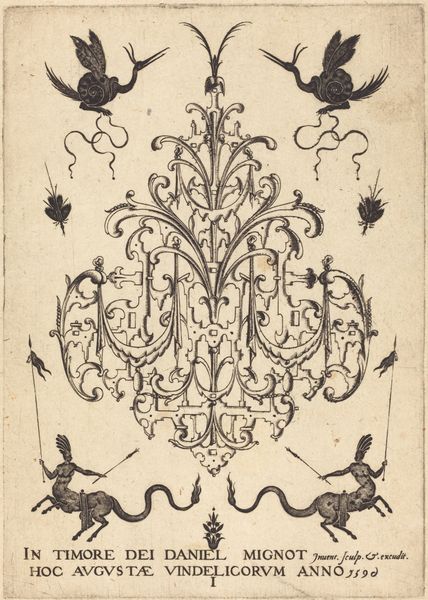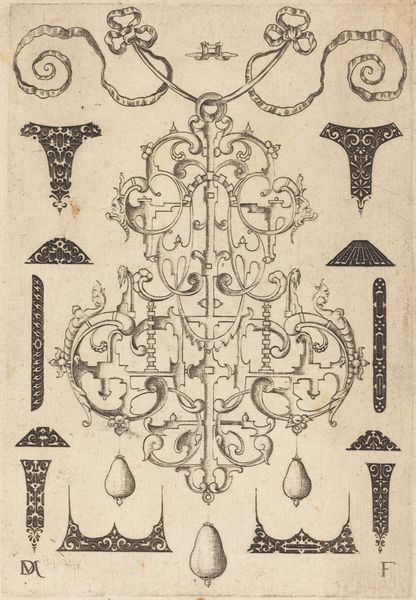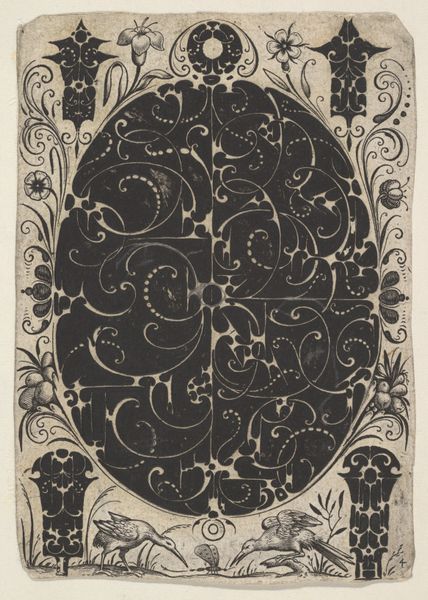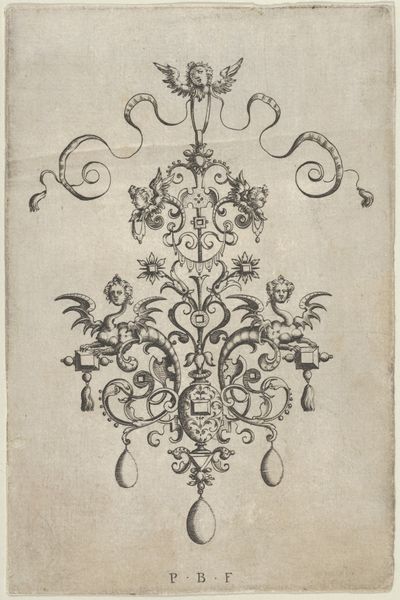
drawing, ornament, print, engraving
#
drawing
#
ornament
# print
#
mannerism
#
cupid
#
engraving
Dimensions: Plate: 5 1/4 x 3 11/16 in. (13.4 x 9.4 cm) Sheet: 5 3/8 x 3 7/8 in. (13.7 x 9.8 cm)
Copyright: Public Domain
Curator: We're looking at a piece titled "Design for a Pendant with Cupid," created around 1609 by Master P.R.K. currently held at the Metropolitan Museum of Art. It's an engraving, likely intended as a model for a goldsmith. The ornamentation is quite intricate. Editor: It strikes me as a bizarre celebration of…violence? We have Cupid, the god of love, but also scenes of combat like the bull and the warrior down below. It is almost baroque in complexity. Curator: The contrast is striking, isn't it? This Mannerist style revels in complexity. These prints circulated widely among artisans. Consider the material implications – the easy reproduction meant a goldsmith, far from the center of artistic innovation, could create a pendant with such complex imagery, satisfying patrons. It speaks to consumption habits too. Editor: But what do we *consume* when we wear this? The images, though small, are hardly innocent. The globe at the pendant's center is decorated with more miniature scenes. This globe topped by Cupid... it's the world under the sway of love. Yet even love, in this context, appears intertwined with these mini-dramas of dominance. It shows cultural memory. Curator: And the technique! Engraving demanded specific tools and expertise; each line a physical mark, meticulously carved to guide later craftsmanship. The value wasn't just the image but the *labor* encoded in the printing plates. The prints acted as tools, influencing taste, distributing wealth. The making of art is deeply entangled with material and societal structures. Editor: The tension is compelling—between love, violence, and a kind of ornamental excess. Curator: Yes, an artifact reflecting a complex cultural tapestry. Editor: I see continuity in cultural memory here, even the ambivalence surrounding human desire. Thank you for showing the interplay between material realities and artistic imagination.
Comments
No comments
Be the first to comment and join the conversation on the ultimate creative platform.
